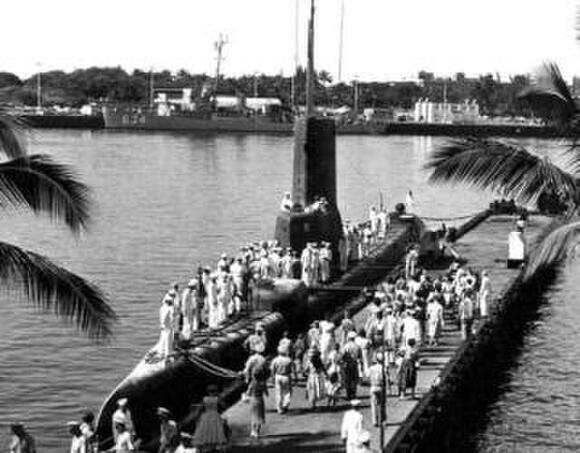The second American submarine lost since World War II sunk during a training exercise - NewsBreak
On May 28, 1958, the USS Stickleback (SS-415) became the second U.S. submarine lost after World War II. This Balao -class submarine never saw combat during the war because her first patrol began on August 6, 1945—the same day the atomic bomb was dropped on Hiroshima. Later, she served in the Korean War from February to July 1952 before returning to regular peacetime operations.
After the Korean War, Stickleback participated in training exercises, but during one of these drills, she was lost.

On June 26, 1946, following the Second World War , the USS Stickleback was decommissioned. However, the submarine was recommissioned on September 6, 1946, serving as a training ship out of San Diego. In November 1952, the vessel was sent to Mare Island Naval Shipyard to be converted into a GUPPY IIA-type submarine.
After her conversion, Stickleback joined Submarine Squadron 7 out of Pearl Harbor. Between February-July 1954, she saw service supporting the United Nations (UN) forces in Korea . Following the conflict, the vessel participated in a number of exercises and training missions.

During an anti-submarine warfare exercise off the coast of Oahu, Hawaii, the USS Stickleback participated alongside the USS Silverstein (DE-534), a John C. Butler -class destroyer escort, and a torpedo retriever.
The exercise turned dangerous when Stickleback simulated a torpedo attack on Silverstein . A critical power failure caused the submarine to descend uncontrollably into the Pacific Ocean. Reports state that Stickleback plunged to a depth of 800 feet - twice her maximum diving limit - before the situation worsened.

If the crew hadn’t made it back to the surface, the USS Stickleback would have been crushed by the deep ocean’s intense pressure. Luckily, disaster was avoided when the submarine released her ballast tanks, allowing her to rise. But just as the danger of being crushed had passed, another unexpected threat appeared—the USS Silverstein .
As soon as the Stickleback surfaced, she was directly in the Silverstein ’s path. To avoid a crash, the Silverstein ’s crew quickly put the engines in reverse and turned the rudder hard to the left. Despite these quick actions, the Silverstein still hit the Stickleback ’s left side, causing major damage.

The USS Stickleback began taking on water. With little they could do, the 82 crewmen aboard were transferred to the torpedo retrieval ship involved in the exercise. Attempts to save the vessel involved the USS Silverstein , along with the USS Sturtevant (DE-239), Sabalo (SS-302) and Greenlet (ASR-10), securing lines around her.
Despite their efforts, the submarine continued to flood. At 6:57 PM on May 29, it was reported that Stickleback "sank in 1,800 fathoms of water." Just a month later, she was removed from the Naval Register.

In 2020, the Lost 52 Project , a private company dedicated to locating all American submarines lost during World War II and the four that sunk during the Cold War , began a search for the USS Stickleback . This marked the company's sixth discovery, achieved through the use of sonar-based imagery and robotics technology.
Bob Neyland, head of the Naval History and Heritage Command's Underwater Archaeology Branch, stated Stickleback 's discovery provided "an opportunity to remember and honor the service of our sailors and marines."













